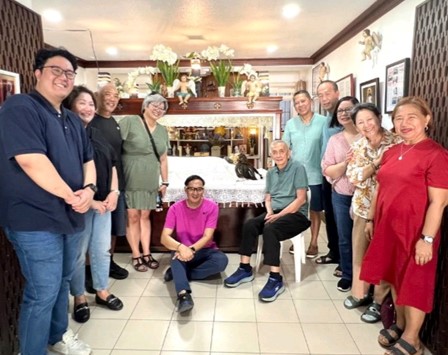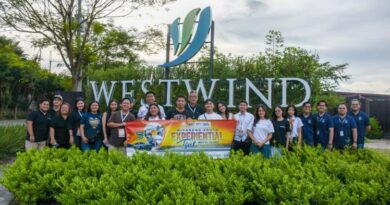Imus Clan Keeps 19th-Century Lenten Tradition Alive for Future Generations
Imus City, Cavite — While Cavite is rightfully known as the birthplace of Philippine independence, it is also a stronghold of religious and cultural traditions that have stood the test of time such as “Pabasa ng Pasyon” (Reading of the Passion, a province-wide observance), “Penitensya” (Penance, in Ligtong of Rosario town) and “Santo Entierro” (Holy Burial, also province-wide).
One family that has kept these sacred traditions alive is the Montoya-Sayoc-Dominguez clan of Imus City. As modernity continues to reshape Filipino culture, this family offers a powerful reminder: that “some legacies are worth carrying, not just in memory, but in faithful action,” says Architect Romy Sayoc Cord Cruz – a sixth-generation descendant.
“In today’s fast-changing world, traditions like these remind us of our roots,” says Coord Cruz. “It’s not only about maintaining a tradition—it’s about passing down a part of who we are to the generations after us.”
The family gathers every Palm Sunday to venerate a wooden image of the dead Christ, believed to be from the 19th century. Its origins is anchored in documents dated 1878 which “were written by my great-great-grandfather Emeterio Dominguez, listing the materials and expenses related to the Santo Entierro,” said Coord Cruz. He adds that the image is owned by Nicolasa Sosa Dominguez Sayoc, and its care has been a family responsibility ever since.
Like last year, the Mater Dolorosa (the image of a sorrowful mother, the Virgin Mary grieving over her dead son, Jesus Christ) is placed beside the Santo Entierro (Holy Burial), serving a perfect backdrop to the annual ‘pabasa’ (chanting/singing in public of the 16th to 17th century epic poem narrating the life of Jesus Christ from birth to resurrection) – which the family observe every Maundy Thursday to Good Friday.
Owned by Eric Michael Nolasco, the 3 1/3 feet antique statue of Mater Dolorosa used to be the Holy Week image of the Our Lady of the Pillar Parish in Imus (City) and was a regular in Holy Week processions until the 1960s,” he said.
The Montoya-Sayoc-Dominguez family intends to not just keep this Lenten practice alive but to carry it on to the family’s next generations as it not only tightens the family’s bond, but reconfirms their strong faith to our Lord Jesus Christ and their devotion to Mother Mary.
This year’s “Pabasa” (chanting/singing in public of the 16th to 17th century epic poem narrating the life of Jesus Christ from birth to resurrection) hosts are Greg and Analynn Padua De Perio, Rolly and Lollit (+) Dominguez Pascua and Mario D. Padua who are all based in California, USA.
The tradition of Santo Entierro is not unique to Cavite alone. Across the country, particularly in deeply Catholic provinces such as Pampanga, Bulacan, and Quezon, similar processions take place on Good Friday.
In these rituals, ornately adorned life-sized images of the dead Christ are paraded through the streets in candle-lit carrozas, accompanied by mourners in solemn prayer. These processions serve not only as acts of devotion but as living testaments to the enduring power of Filipino faith. #boksmusings #SantoEntierro #HolyWeek2025 #mywallmypage (By Boks Musings)




